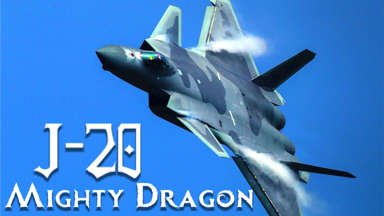In a striking display of technological prowess, China’s National University of Defense Technology (NUDT) has unveiled a mosquito-sized drone on CCTV 7, the country’s official military channel.
This insect-like flying robot, designed for stealth missions, has sent ripples of concern across the globe. Measuring a mere 0.6 to 2 centimeters in length and weighing less than 0.3 grams, the drone mimics a mosquito with bionic flapping wings, a sleek black body, and three hair-thin legs.
Its near-silent flight and near-invisible design make it a formidable tool for covert operations, raising alarms about its potential use in surveillance, cybercrime, and even biowarfare.
This drone’s capabilities have strategic implications and a larger context in the field of micro-robotics in modern warfare.
The Mosquito Drone: A Technological Marvel
The mosquito drone, developed by NUDT, represents a leap in bio-inspired robotics. Its design draws from nature, replicating a mosquito’s lightweight structure and agile flight.
The drone’s bionic wings, powered by advanced micro-actuators, allow it to hover and manoeuvre with precision in confined spaces. Unlike traditional drones, which rely on propellers and generate audible noise, this drone’s flapping wings produce minimal sound, making it nearly undetectable.
China built a tiny drone the size of a mosquito that can sneak around quietly and may even be used in secret missions 🕵️♂️
— Tansu Yegen (@TansuYegen) June 27, 2025
Its tiny size enables it to blend into urban or natural environments, evading conventional detection systems like radar or visual surveillance.
Equipped with cutting-edge technology, the drone carries cameras, microphones, sensors, and communication modules. These enable it to capture high-resolution images, record audio, and collect electronic signals, making it ideal for intelligence gathering.
Potential applications include infiltrating secure facilities, monitoring restricted areas, or conducting reconnaissance in urban warfare scenarios. The drone’s ability to operate in swarms further amplifies its utility, allowing coordinated missions to cover large areas or overwhelm defenses.
The NUDT’s development reflects China’s growing investment in micro-robotics. The drone is part of a broader program that includes artillery-launched micro-drones and humanoid robots, showcasing the country’s ambition to dominate next-generation military technology.
While the mosquito drone’s specifications remain partially classified, its reveal on state media suggests confidence in its capabilities and a strategic intent to project technological superiority.
Global Concerns
The unveiling of the mosquito drone has triggered widespread unease among global security experts, policymakers, and the public.
Its stealth and versatility raise significant concerns about its potential misuse. For espionage, the drone could infiltrate private homes, government offices, or corporate headquarters to eavesdrop on conversations, capture sensitive data, or monitor high-value targets.
Its small size makes it difficult to detect or counter, posing a unique challenge to existing security protocols.
Beyond surveillance, experts warn it could be adapted for cybercrime, such as hacking into unsecured networks or deploying malware. The drone’s communication modules could, in theory, intercept or manipulate electronic signals, thereby compromising critical infrastructure such as power grids or communication systems.
The most alarming speculation surrounds its potential in biowarfare. While no evidence confirms this capability, the drone’s mosquito-like design fuels fears it could carry pathogens or toxins for targeted attacks.
A single drone might be negligible, but a swarm could deliver payloads across a wide area, raising ethical and humanitarian concerns. Such scenarios, though speculative, underscore the need for international oversight of micro-robotics in military applications.
The Global Race In Micro-Robotics
China is not alone in its pursuit of micro-drone technology. Other nations, including the United States, Norway, and Israel, have developed similar systems for military and civilian use.
Norway’s Black Hornet 4, a palm-sized drone, is widely used by NATO forces for battlefield reconnaissance. Harvard University’s RoboBee, a micro-drone with flapping wings, demonstrates civilian applications such as pollination and environmental monitoring.

However, China’s mosquito drone stands out for its extreme miniaturisation and stealth, setting a new benchmark in the field.
The global race for micro-robotics reflects the broader shift in warfare toward autonomous and covert systems. Drones, once limited to large platforms like the Predator, are now shrinking to insect-like proportions, enabling new forms of intelligence gathering and tactical operations.
This trend raises questions about the future of warfare, where battles may be fought not only on physical battlefields but in the airspaces of cities and homes.
Strategic Implications For Global Security
The mosquito drone’s capabilities have profound implications for international security. For China, it enhances its asymmetric warfare capabilities, enabling it to conduct covert operations with a minimal risk of detection.
This could shift power dynamics in contested regions, such as the South China Sea or along disputed borders, where intelligence is crucial. For adversaries, countering such technology requires advanced detection systems, such as acoustic sensors or AI-driven anomaly detection, which are still in development.
The drone also challenges existing arms control frameworks. Unlike traditional weapons, micro-drones are difficult to regulate due to their dual-use nature. They can serve legitimate purposes, such as disaster response or scientific research, but their military applications warrant scrutiny.
International treaties, such as the Convention on Certain Conventional Weapons, may need updates to address autonomous micro-robots, particularly those with potential biowarfare capabilities.
Privacy is another casualty of this technology. The drone’s ability to infiltrate private spaces threatens individual liberties, particularly in authoritarian regimes where surveillance is already pervasive.
Even in democracies, the proliferation of such drones could erode trust in public and private institutions, necessitating robust countermeasures like anti-drone technology or legal protections.

Scepticism, Uncertainty & Speculation
While the claimed mosquito drone’s capabilities are impressive, scepticism is not unwarranted. CCTV 7, as a state-controlled outlet, may exaggerate the drone’s functionality for propaganda purposes.
Key details, such as battery life, flight range, or payload capacity, remain undisclosed, limiting assessments of its practical utility. For instance, micro-drones often face challenges such as short flight times or vulnerability to environmental factors like wind, which can limit their effectiveness.
Independent verification is critical but challenging. China’s opaque military research ecosystem makes it difficult to confirm the drone’s specifications or deployment status.
Open-source intelligence, including satellite imagery or intercepted communications, may eventually provide clarity, but for now, much of the discourse relies on speculation. This uncertainty fuels both fascination and fear, as the drone’s true potential remains shrouded in mystery.
Balancing Innovation & Responsibility
The mosquito drone underscores the dual-edged nature of technological innovation. On one hand, it showcases human ingenuity, pushing the boundaries of robotics and engineering.
On the other hand, it highlights the risks of unchecked militarisation, where advanced tools can be weaponised to harm rather than help. Addressing these risks requires a multifaceted approach.
First, international dialogue is essential. Global powers must collaborate to establish norms for the use of micro-drones, ensuring they serve peaceful purposes while mitigating potential threats to global security.
Second, investment in counter-technologies, such as laser-based anti-drone systems or AI-driven detection, can neutralise potential misuse. Finally, public awareness and advocacy are crucial to hold governments accountable and protect privacy rights.
Conclusion
China’s mosquito drone is a testament to the rapid evolution of military technology, blending innovation with existential risks. Its stealth, versatility, and potential for misuse make it a game-changer in modern warfare, prompting urgent questions about security, ethics, and governance.
While the drone’s full capabilities remain unverified, its implications are undeniable, forcing the world to confront the challenges of a new era in robotics. As nations race to develop and counter such technologies, the balance between progress and responsibility will shape the future of global security.
- Air Marshal Anil Khosla is a former Vice Chief of Air Staff (VCAS) of the Indian Air Force and AOC in C of Eastern Air Command.
- He tweets at: @AnilKhosla16








